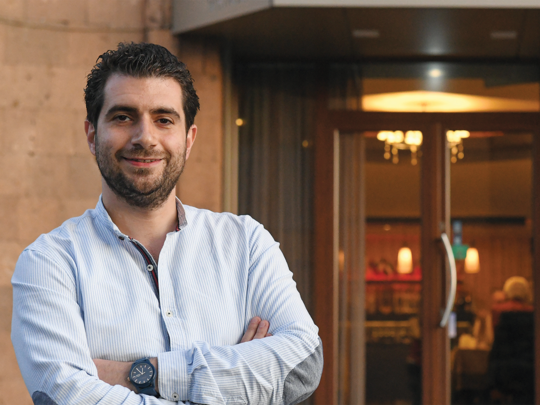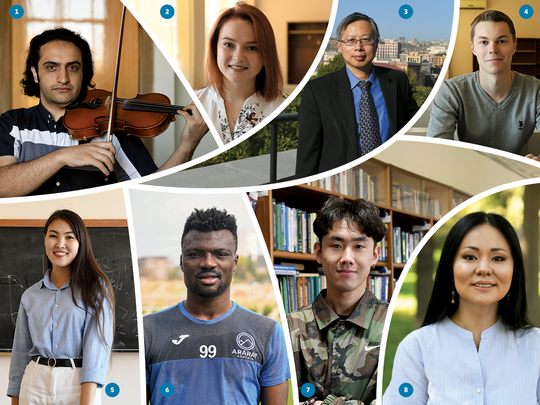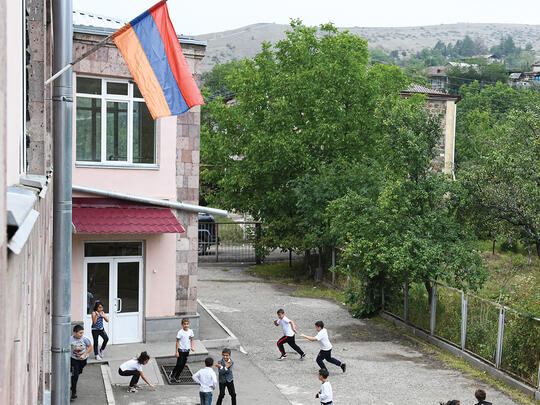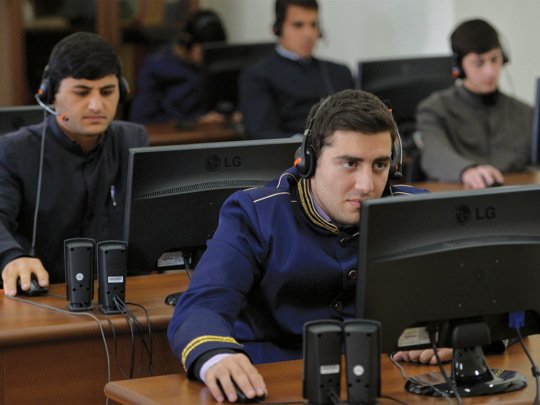From what sounded like a galaxy far away, the booming voice of the god of cyberspace set forth the new rules of the Digital Revolution and the coming of the Quantum Age. The disembodied proclamation echoed across the cavernous auditorium in which thousands of the global digerati waited for the 23rd World Congress on Information Technologies (WCIT) to begin its three day-conversation about “The Power of Decentralization: Promise and Peril.”
“You no longer need to be on stage to be seen. You don’t need a microphone to be heard. You needn’t be huge to be noticed. If you have something important to say, you will become the center. And it’s not necessary to be in a center to be the center. You can be anywhere,” the cyber-god announced.
The decentralization of influence and the democratization of access to information were the recurring themes woven into every facet of this prestigious gathering of some of the world’s leading technologists, futurists and social media royalty assembled with the international mix of attendees last October at Armenia’s Karen Demirchyan Sports Complex, better known as Hamalir, in Yerevan.
By most accounts, these words seemed to have worked their magic to transform the image of Armenia from the all too familiar “tiny landlocked country with few natural resources” to the newest center of the tech universe with a global reach and a deep wellspring of entrepreneurial and ingenious talent—attributes typically associated with technology power centers like Silicon Valley, India, and China.
The liberating mantra that size and location are irrelevant in the digital age has profound implications for Armenia as it begins the next chapter of its tech sector success story. During the 20 substantive panel discussions featuring over 120 panelists, the vast majority of whom were not from Armenia, many spoke about the reshuffling of the economic and industrial order made possible in the borderless frontier that is cyberspace.

Outsider Insights
The opening keynote speech set the tone, delivered by best-selling author and former U.S. government official and national security expert Richard Clarke, author and former National Coordinator for Security, Infrastructure Protection, and Counter-terrorism for the U.S. He lauded Armenia’s advantages in a world in which, individuals are all digital citizens: “Countries like Armenia, countries that train people in how to code, can become economic powerhouses by tying into the knowledge economy,” he declared.
Clarke’s thesis was echoed by Dr. Jamie Metzl, technology futurist, geopolitical expert and senior fellow at the Atlantic Council. “I feel very strongly that Armenia is reaching a tipping point where it will accelerate toward significantly faster growth. It’s like pushing to jump-start a car. You need a lot of effort in the beginning but then the car starts to move with its own momentum. That’s what is happening here. It feels like the Armenian innovation economy is opening up.”
Metzl went on to describe how he was dining the night before with an ethnic Armenian from Lebanon who was contemplating moving to Armenia. “Two years ago the answer probably would have been ‘no.’ Last year it was, ‘well, let’s see.’ Now he’s probably moving. You have so much incredible talent and wealth among Armenians outside the country who will increasingly want to support and benefit from the coming Armenian renaissance. Once this engine really gets going, there’s no end to how far or fast this car can go.”
Armenia Marks the Spot
Earning the privilege to hold an event with the global cache of WCIT was a triumph for Armenia, who was the first small country to join the ranks of past hosts such as the United States, France, Canada, and Japan, along with major developing countries such as India, Brazil, and Mexico. As the signature event of the World Inform-ation Technology & Services Alliance (WITSA), a consortium of information and communication technology (ICT) associations from around the world, WCIT has been a platform for tech leaders for over 40 years, with past featured star-power speakers like Bill Gates, Michael Dell, Bill Clinton, and Vint Cerf.
Dr. James Poisant, Secretary General of WITSA, pointed to Armenia’s strong commitment from both its government and industry sectors as reasons to choose Armenia. “Armenia as a nation took a quantum leap in fully engaging the digital age as a major part of its future by hosting a world-class WCIT… and WITSA could not be more pleased with the final results,” he stated after the conference concluded.
WCIT was the opportunity for Armenia to step onto the world stage, presenting itself to 6,700 attendees, including 2,000 delegation members, panel speakers, journalists and guests from 70 countries. Attendance was the largest in the history of the conference, a rich opportunity for Armenia to register on the radar of the world as a tech center worth watching.
Yet, what appears as the overnight success of Armenia as a tech wonder has, in reality, been years in the making. In fact, its technological preeminence began during Soviet times, when despite comprising only 1.5% of the population of the U.S.S.R., Armenia pulled its weight as a major center of science and discovery, contributing innovations especially in electronic military systems. Now recovering from the free fall of the Soviet model and the flight of the country’s best and brightest minds, Armenia is regaining its stride with a new wave of technological development and a young generation with start up fever—one that possesses the skills and smarts to compete globally with its own brand of tech-driven innovations.

The “Show-Me” Effect
A delegate from Argentina Alberto Patron, CEO of telecommunications software company Condor Technologies, described how it was only after attending WCIT 2019 that his first impression of Armenia took a sharp turn. “I now see Armenia as a place where there are opportunities for my company to outsource development or even open an R&D lab given the quality of resources. I was impressed to find out that world-class companies like VMware are already doing that. I find some similarities with Argentina in the sense that both countries are aiming for quality over quantity…challenging the idea of ‘the center’ is right on target and perfectly represents the huge opportunity this new digital age represents for a country like Armenia.”
The advances that have taken place in Armenia over the last few decades are easy to see and there is no question that Armenia is a leader in the region and, with continued efforts, will be a leader in technology.
A common reaction of the speakers, such as that of Neil Bansal, former Head of Digital Transformation at BNP Paribas and moderator of WCIT’s panel on Financial Technologies, was that of pleasant surprise. He described how, after visiting Armenia for a week, conversing with many business leaders and reviewing the innovations of various Armenian start ups, he was encouraged by the ingenuity and energy coming out of Armenia’s tech entrepreneurs. Bansal raised another encouraging point: “I also believe there is strong alignment between the public and private sector to encourage a more data literate population and remove bureaucratic obstacles. This should help Armenian companies not only provide bespoke solutions that can be exported outside the country, but also serve as an execution arm to fulfill demand where needed.”
As the Armenian tech sector grows, so does its impact abroad. Earlier this year, Peter Radsliff, principal of the marketing consulting company Product Alchemy, based in San Mateo, California, took on a client headquartered in Yerevan. In working with them, he heard about Armenia’s vibrant tech scene, so WCIT 2019 was his chance to see it for himself. The experience proved the point. “It seems that there is a spirit of entrepreneurship among young Armenian people, especially in tech. This could be a huge asset for the country, one that could be fueled with certain programs by industry or the government. I would love to see a series of incubators.” Curt Hebert, former chairman of the U.S. Federal Energy Regulatory Commission, also expressed a positive outlook “…The advances that have taken place in Armenia over the last few decades are easy to see and there is no question that Armenia is a leader in the region and with continued efforts, will be a leader in technology.”
The Diaspora Factor
Among the distinguished panel participants and moderators was a notable roster of diasporan business leaders and role models. Of the over 120 speakers, 25 were from the Armenian diaspora, such as Reddit co-founder turned venture capitalist Alexis Ohanian, Pixar senior executive Katherine Sarafian, PicsArt founder and CEO Hovhannes Avoyan, rock band leader and social activist Serj Tankian, entrepreneur and beauty mogul Kim Kardashian West, executive film producer Eric Esrailian, chief architect of Synopsys (Palo Alto) and founder of Synopsys Armenia Dr. Yervant Zorian, and founding board member and first investor of Salesforce Magdalena Yesil, in addition to thought leaders in education like President of San Jose University Mary Papazian. All expressed an overall positive outlook on Armenia’s tech credentials and business potentials. For Armenia, their visibility at the conference was an instant image-booster, not only for the tech industry, but for the Armenian Nation writ large.
Armen Morian, a New York lawyer who masterminded the WCIT Yerevan speaker agenda, elaborated: “It was truly inspiring to learn about so many diasporan Armenians of serious accomplishment in the tech sphere and beyond, many of whom we had not previously heard about, and frustrating not to be able to accommodate them all as speakers. But these achievers are the natural resource and true wealth of the Armenian nation and, properly harnessed, their know-how and professionalism can dramatically propel Armenia’s development forward.” This perspective was amplified by senior vice president and Oscar-winning producer at Pixar Katherine Sarafian: “I’m heartened by the progress I’m seeing in Armenia, and of course throughout the world with diasporan Armenians thriving in technology careers—as entrepreneurs, engineers, technical artists and thinkers.” She referenced how diasporan-founded TUMO has helped build “a generation of savvy, creative and enthusiastically techy Armenians,” along with venture funds and other initiatives sourced in the diaspora which are encouraging Armenians worldwide to support each other. Sarafian noted the powerful impact of those who hold influence taking the time to teach, mentor, or set an example for a fellow Armenian, noting that “even small actions can really add up, especially in terms of mentoring and sponsorship.”
In his keynote address to WCIT, Alexis Ohanian reflected on the power of decentralization to make diasporans and their counterparts in Armenia more accessible to each other: “This country has such a legacy and so many ideas worth sharing. [There are] so many Armenians who have historically thrived all over the world, that now, are going to do so here. And I am just humbled and honored to be a part of it—a member of this tribe.”

Attracting Expats and Repats
These sentiments did not go unnoticed by Deputy Prime Minister Tigran Avinyan who, during his panel discussion, said, “If we talk about Armenians, I can say that we’re a global nation and we’re a decentralized nation as well, and that is where our power lies… I managed a company, before being in the government, that was producing services for companies from more than 15 countries, and we were doing that remotely from Armenia. And I think that is the approach in each and every field and the approach of the future world. I think if we create the opportunities in the country, if we create the human-centric public administration and services and if the person likes the atmosphere that there is in the country, I believe there will be a lot of repats coming back to Armenia, and hopefully foreigners too.”
One of those repats is Armen Rostamian, who moved to Armenia in August 2018 from California to take part in Armenia’s tech scene. A few short months later in December, he co-founded Grüv, a music ecosystem platform for curators to share and create their own playlists and earn rewards for their quality. The idea won the Armenian government’s Neruzh contest, aimed at creating opportunities for diasporan innovators to develop start ups in Armenia. Rostamian identified multiple factors which make Armenia’s tech industry uniquely appealing. He cited how the purchasing power of the dollar goes three times further than in the states and also hailed Armenia’s new flat tax of 10% as another incentive. After working in Silicon Valley and LA’s Silicon Beach, Rostamian says, “Yerevan’s tech community is by far the most vibrant and collaborative I’ve ever seen, and I found its members always willing to help each other succeed.”
Women in Tech
While the world is discovering Armenia as a tech destination, there are fascinating aspects to it which might not even be known to the global diaspora. Despite living in a male-dominated economy, women in Armenia are playing an increasingly larger role in its tech scene, a field which internationally suffers from a gender imbalance.
I’m heartened by the progress I’m seeing in Armenia, and of course throughout the world, with diasporan Armenians thriving in technology careers—as entrepreneurs, engineers, technical artists and thinkers.”
Narine Ter-Ghevondyan, CEO of Codex, a web-development company in Armenia, reports 42% percent female employees in professional positions in her organization. She also points to a recent stat from the Enterprise Incubator Foundation (EIF) State of the Industry Report, which indicates that, in 2018, over one-third of Armenia’s tech labor force were women.
This above-average number of women in tech seems to affirm the experience of Madlene Minassian, the director of Content Marketing at Armenia’s internationally renowned image editing app PicsArt. It boasts 51% female employees across the company, including 30% of its engineers and 48% of its leadership positions, as well as its AI (Artificial Intelli-gence) director.
Minassian attributes these remark-able numbers to the vision of its founder, Hovhannes Avoyan, a pioneer in Armenia’s modern tech industry who she describes as placing great importance on equality and knocking down perceived limitations. Minassian also credits this trend of women working in Armenian tech to the legacy from Soviet times of placing a focus on education on math and the sciences for both men and women. This resulted in less of a barrier for girls to excel in these subjects (something seen far less often in tech leaders like the United States) and to pursue careers in the field. The dynamic role of women might come as a surprise to those abroad, adding one more selling point for Armenia as a tech destination.
Sarafian summed it up best, saying: “I was thrilled to visit PicsArt at long last and see the gender parity they are building in their offices around the world. And with more Armenians investing in women-run businesses, education programs for women in tech, and scholarships, we are setting a new standard. My dream is that the world sees what’s happening with women in tech careers in Armenia and takes note. Let’s be the standard-bearers on women in tech!”

Policy and Tech
By most accounts, all see Armenia’s success coming from an ever-expanding capability as a destination for outsourcing, while others warn against too much reliance on that and encourage Armenia to rely on its ability to innovate. WCIT attendee and Fintech specialist Alex Sardar, currently the Executive Director of The SEEP Network, who spent many years as an expat in Armenia working for USAID, offered his own thoughts on Armenia’s future: “I really do see Armenia becoming a hybrid model as a tech hub that serves the region. I predicate that with one very important requisite—that is if the liberal policies of any Armenian government continue. It’s going to be growing as a tech outsourcing center, so talent remains in Armenia but produces and provides services for the outside, that’s a huge sector. In addition, it’s going to become a tech education center, which I think is quite clear looking at, for example, TUMO and their franchising model. I don’t think there’s quite a name for it yet, but it is disrupting the education model in tech. It’s all going to depend on whether we maintain the trajectory of the past year. We must keep progressing because at the base of all this tech success is good governance and an engaged citizenry.”
Talent on Tap
The promise of technology to drive Armenia’s economy has ignited a new debate about how Armenia’s educational system must evolve to meet the demands of sustainable growth. According to pioneering Silicon Valley entrepreneur Magdalena Yesil, Armenia’s current educational system is holding the industry back because the country isn’t graduating enough engineers and computer scientists. “It needs ten times the amount so that companies have a pool to hire from. I think that Armenia, if it doesn’t produce more graduates…will be stifled from quicker growth.”
She adds that Armenia must invest in the universities and encourage tech career tracks. “Students today are very good quality, there just aren’t enough of them.” While this may be a natural result of a small population, other small countries like Slovenia are proving the contrary simply by overinvesting in tech-bound career programs to compensate. “There are also companies like VMware which have a presence in Armenia,” Yesil argues, “but have not grown its head count in a significant way because it’s limited by the number of engineers in the field. We could have Google, Facebook, and Twitter coming to Armenia developing engineering centers if we had a much bigger pool of graduates.”
Digital vs Critical Thinking
Though Armenia needs to produce more graduates in STEM majors, professional educators caution against putting all Armenia’s pedagogical eggs in one basket. Dean of General Studies Sharistan Melkonian at the American University of Armenia (AUA) and her colleague Lecturer and Education Advisor Suzanne Daghlian, who teaches writing to incoming freshmen, make a strong case in favor of critical thinking as the driver of innovation and socio-economic growth.
In order to have a global relationship with all these other IT opportunities around the world, our graduates have to be worldly enough and understand how the world works.
“We have to avoid the false dichotomy that it’s only one or another. Of course, we need technology and of course we need the humanities,” asserted Melkonian. When compiling the AUA curriculum, Melkonian and Daghlian kept in mind that STEM recruiters want to hire adaptable professionals, not just tech-savvy students. “In order to have a global relationship with all these other IT opportunities around the world, our graduates have to be worldly enough and understand how the world works,” Melkonian explained.
AUA offers a required seminar for all freshmen. It’s a one-year course designed to engage in an open environment. “With this program, first-year students are encouraged to explore the humanities and challenge their preconceived notions in a way that other college courses haven’t offered before,” Melkonian explains. “We have to remember that some of our students come from a very traditional educational model where the humanities aren’t encouraged,” she said. The seminar focuses on issues of discrimination, racism, social activism, leadership, and proper citizenship in hopes of creating well-rounded students prepared for an uncertain future.
“How are we going to prepare our students for a changing world?” asked Melkonian, noting how various WCIT panelists emphasized the importance of learning to code and how many students feel the pressure to prioritize learning coding over subjects in the humanities. In addition to changing priorities, teaching methods and formats have changed with the introduction of new technologies.
Armenia’s Strategic Toolbox
One of the clear takeaways from WCIT is that Armenia’s tech sector has the power to wow the world when given the opportunity. The challenge is creating more such opportunities proactively and strategically, understanding that many other countries are competing for the same space. Though not a simple task, Armenia has reached a level of industry maturity to confidently showcase its high-caliber professionals and innovative products, while also leveraging the success of prominent Armenian natives who have successfully grown their tech companies, such as PicsArt and ServiceTitan, to global heights. Armenia also must continue to harness the global engagement power of the diaspora and develop a cohesive national branding strategy to grow its share of market at a faster rate.
Another factor that can foster this process is societal developments, coupled with the growing profile of Armenians from the diaspora, that have made it “cool” to be Armenian, a catchphrase that Prime Minister Nikol Pashinyan himself has been known to quip when engaging with diasporan youth.

Global Brainpower
As Ohanian related from the WCIT stage, “We are a special people, we have triumphed over so much and this is a really unique time where I’ve had more friends and strangers than ever ask me about Armenia, be excited about Armenia.” He went on to say: “This is an important time for a country like Armenia, which has very challenging neighbors, is landlocked, has limited natural resources, all the things you know, but have, at this time, such an amazing opportunity because the human talent which has always been in this country has a chance to thrive as a part of this global brain, because of software and because of the internet.”
Closing in on a tipping point, equipped with talent and hope for the future, Armenia and its technology industry seem set to do just that.
Modern Armenian Firsts
In addition to its historical and archeological bragging rights, Armenia boasts two 21st century originals
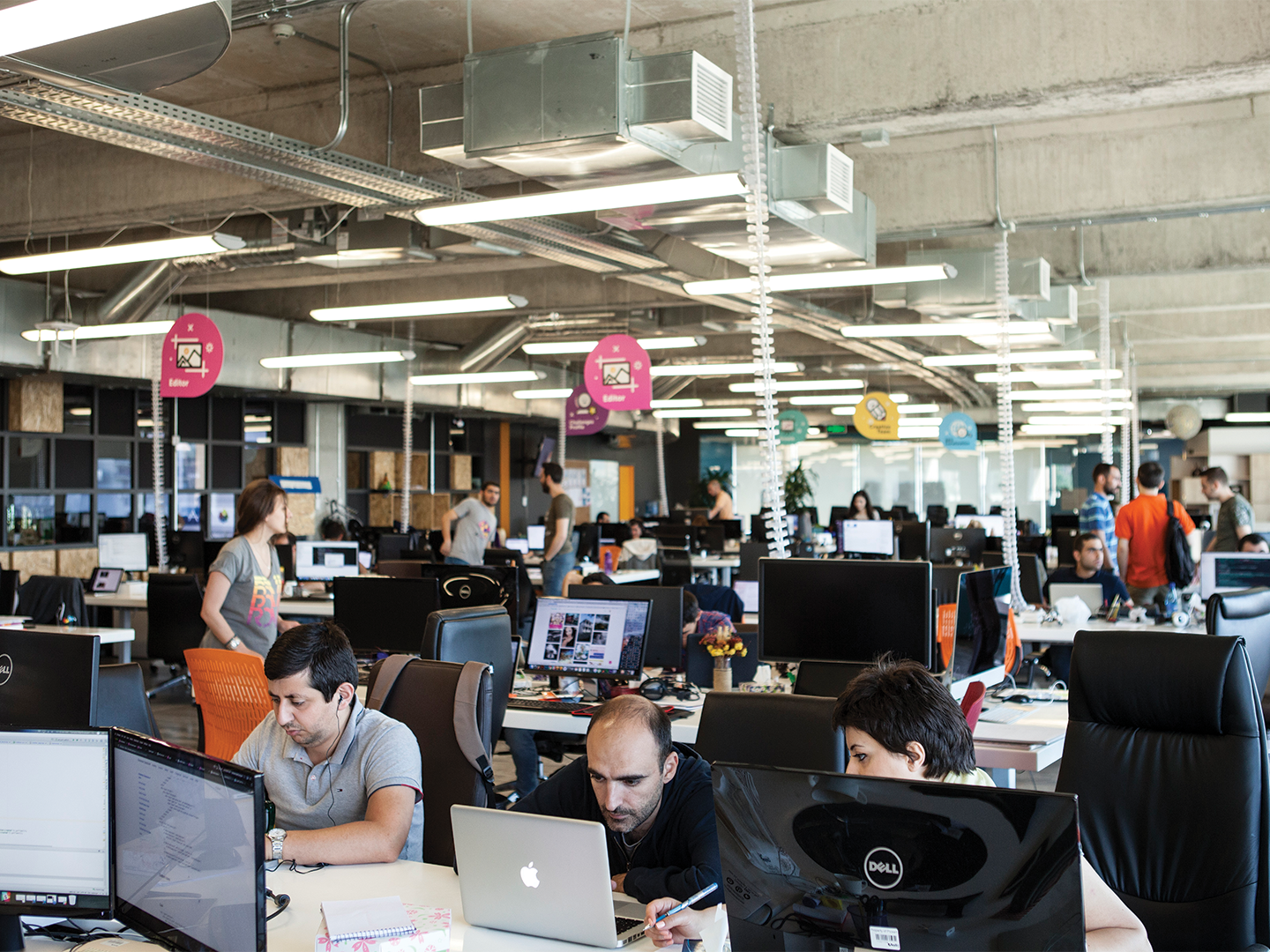
PicsArt One can look to PicsArt’s meteoric rise from a start up, founded by Hovhannes Avoyan in Yerevan in 2011, to a global company that now boasts 130 million users with 600 million downloads to date. With locations in San Francisco, Los Angeles, Beijing, Tokyo, and Moscow, all app development and science is carried out in Armenia, a huge point of pride for the company and a boon for Armenia’s job market. PicsArt is one of Armenia’s biggest success stories in tech, making Armenia increasingly magnetic for investment abroad.

TUMO Center for Creative Technologies Sam Simonian’s concept of alternative education for youth has become a groundbreaking model of how to orient young minds to follow their imaginations with the versatility of digital tools and the discipline of teamwork to arrive at inventive new ways of viewing, inhabiting and changing the world. Since the first TUMO center was established in Yerevan in 2012, franchises can now be found in Gyumri, Stepanakert, Paris, and Beirut, with more to come. With all the rave reviews voiced by many WCIT participants, TUMO is on track to become the standard-bearer of digital education worldwide.
Banner photo credit Andrey Buzin/Avocado Toast



